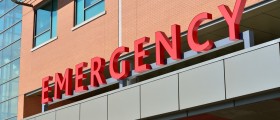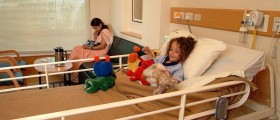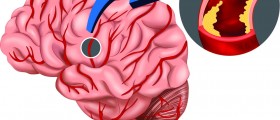I keep hearing people talking about this coronary thrombosis and I don't have an idea what that could be. I am really surprised because I haven't heard about this before especially because my mom was struggling with thrombosis her whole life. It was really painful to watch. Now, I am afraid that I could be one of those patients who might be diagnosed with it in the future. So I came hear to ask you, because I do believe that you have a lot of experience with it, what is coronary thrombosis and what are its signs and symptoms? Thx a lot.
Loading...
Hey dear Guest. Coronary thrombosis is the formation of a blood clot inside a blood vessel of the heart. It can be very serious if let untreated. This blood clot restricts blood flow within the heart. It is associated with narrowing of blood vessels subsequent to clotting. The condition is considered as a type of ischemic heart disease and I believe that we were talking a lot about it. Thrombosis in the heart can lead to a myocardial infarction which can be extremely dangerous. Coronary thrombosis and myocardial infarction are sometimes used as synonyms, although this is technically inaccurate as the thrombosis refers to the blocking of blood vessels, while the infarction refers to the tissue death due to the consequent loss of blood flow to the heart tissue. The heart contains many connecting blood vessels, and depending upon the location of the thrombosis, the infarction may cause no symptoms.
Loading...
Loading...
Hi there Guest,
The heart is surrounded by three major coronary arteries that supply it with blood and oxygen.
If a blood clot develops in one of these arteries, the blood supply to that area of the heart muscle will stop. This is known as a heart attack, or in medical terms a coronary thrombosis or myocardial infarction.
A heart attack will cause severe chest pains behind the breast bone, often radiating towards the left arm. If the blockage (thrombosis) is not dissolved quickly with medication or treated with an emergency catheter procedure (balloon angioplasty), the area of heart muscle that isn't getting enough oxygen will stop working properly.
Loading...
Hi Guest,
Some people get chest pains (angina), which are a sign that atherosclerosis has narrowed the coronary arteries.
Other people have no symptoms until the plaque ruptures and causes the following:
- sharp pain behind the breast bone or on the left-hand side of the chest, which may spread down the left arm
- pain can also radiate towards the hands, jaw, ear, stomach or the right arm
- a constricting sensation in or around the throat
- breathing difficulties
- sudden fainting or severe dizziness, often accompanied by pain.
If a plaque ruptures, it can be quite dangerous, I would recommend immediate treatment if you find out that you suffering from this.
Loading...
Hi everyone,
This can be very dangerous, Guest. If you happen to be diagnosed with this, and have a severe chest pain, you need to get to a hospital as quickly as possible. Dial the number and wait for the ambulance. Don't drive to hospital yourself, because your condition might worsen on the way. Rest while waiting for the ambulance. Chew an aspirin (eg Disprin) of 300mg strength (this thins blood). If relatives or friends are close by, call them and ask them to come and wait for the ambulance with you. Remain quiet and try not to get anxious, though this may be difficult.
